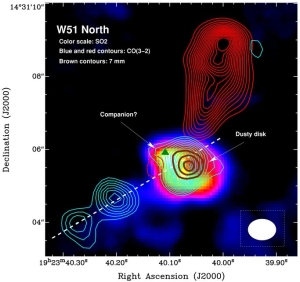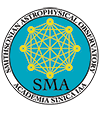|
The existence of massive stars presents a challenge to our understanding of star formation. Stars form from cold molecular gas and dust when gravitational force overcomes the internal pressure in molecular clouds. Radiation from massive stars exerts additional pressure on the infalling material, and may overcome gravity to prevent the formation of such stars. Scientists in the R&G division are actively engaged in research aimed at understanding the birth of massive stars through observations in the radio, sub-millimeter and infrared wavelengths.
High Mass Star Formation
People
CfA:
Eric Keto, Izaskun Jimenez-Serra, Roberto Galvin-Madrid
ASIAA:
On-going Collaborators:
Keping Qiu, Luis Zapata, Pamela Klaassen, Cassandra Fallscheer, Henrik Beuther
|

Overlay of the SO2(222,20-221,21) moment zero emission (color image), the 7mm continuum emission from the compact dusty disk (brown contours), and the CO(J= 3 - 2) moment zero emission from the bipolar outflow (blue and red contours) of the young O-type protostar W51 North, made with the Submillimeter Array in 2008. The SO2 and the 7mm images were taken from Zapata et al. (2009). (Zapata et al., 2010, 725, 1091Z)
| 

